Sorry Folks, Planting Forests Will Not Stop Global Warming
Forests and re-planting forests, creating new forests (afforestation) are critically important components for the battle to reduce greenhouse gases and slow down the rate of climate change.
Afforestation, which is the conversion of croplands or marginal lands to new forested land, is a major climate change strategy endorsed by the UN. However, a new modeling study has shown that even if half the current croplands were converted to forests the net temperature reduction would only be a quarter of a degree centigrade (0.25 degrees C). Why so low and what are the implications?
Clearing and harvesting of forests are part of the human-produced carbon footprint. Stored carbon is released when forests are harvested, timber is burnt for power, forested land is developed for other purposes and soil is lost or damaged so that it can no longer grow trees.
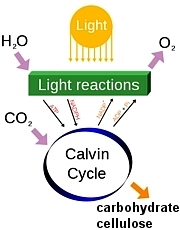
Forests can sequester carbon (using carbon dioxide to built cellulose and wood through photosynthesis) and this, together with the oceans is vital for removing human-caused emissions of green house gases from the atmosphere.
There are major funding programs designed to reduce the clearing of forests and to promote forest re-planting, particularly in the tropics, and afforestation programs based on the idea that forests can remove carbon dioxide from the atmosphere and store it.
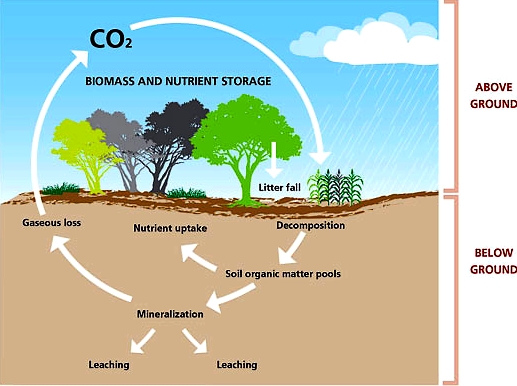
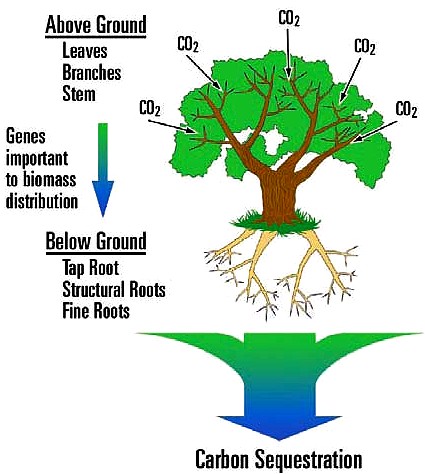
But recent modeling has provided a wake-up call by showing that planting new forests will only lead to a trivial reduction in the temperature of the globe in the context of the current global warming trend and rates of release of greenhouse gases. Even if all or half of the cropland on planet earth, were planted with forests, the study showed that the reduction in global temperatures by 2100 would be 0.45 degrees C and 0.25 degrees C, respectively. Optimistically much less of the cropland will be forested and so the effect on temperature will be trivial. These results show that afforestation is not an effective substitute for reducing greenhouse-gas emissions in other ways, including reducing deforestation. Why is afforestation so ineffective?
Carbon in Trees - The Balance on Planet Earth
United States forests absorb about 12 percent of the carbon emitted from burning fossil fuels. On a world-wide basis, forest carbon sequestration may absorb as much as 30 percent of emissions.
Forests have some potential to mitigate global warming. But to be effective it will require best management practices foster carbon sequestration and keep the carbon in the trees, keep the trees in the forest, and manage the forest for carbon sequestration, not to maximize bottom-line profits of growing trees for timber production.
Some trees are being planted, but others are being harvested, rainforests cleared, and some trees deliberated harvested as biofuel for power production. Trees are regarded as a renewable resource not as a fossil fuel. This means that many countries allow or even encourage the harvesting and burning of trees to produce power. This is based on the argument that the carbon dioxide released from the burning will be recaptured when the harvested forests are replanted. But there is a huge overshoot caused by the harvesting rates being larger than the replanting rates. There are major time issues - because it takes 25-100 years for trees to regrow to maturity. There are also minor imbalances associated with leakage when the new trees are harvested or thinned and the loss of production through soil loss and declining nutrients. Are the replanted forests as efficient in sequestering carbon?
Will the re-growth ever get bigger than the clearing and deforestation? There is a huge overshoot because trees take so long to grow and the rate at which trees are chopped down and forest are cleared continues to increase.
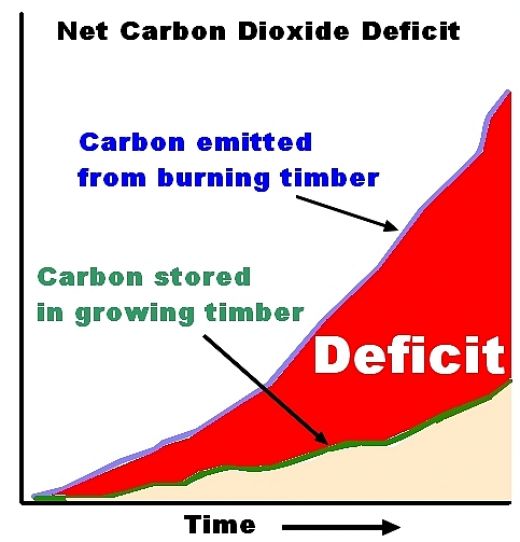
Rates of Deforestation exceed Reforestation Worldwide
The total area of forest on planet earth is just over 4 billion hectares, and covers about a third of the total land mass. Forest cover is unevenly distributed and just seven countries have about 60 percent of the total forests, 25 countries have about 80 percent and the remaining 18 percent is hared by 170 countries. Just five countries (Brazil, Canada, the Russian Federation, the United States of America and China) account for more than 50 percent of total forest area. The net carbon balance largely depends on what these countries do with their forests.
While reforestation rates exceed clearing rates in many Western countries, the tropical rainforests in Asia, Latin American and Africa continue to be cleared at an alarming rates. The net annual decline in forests in the ten year 2000-2010 was equal an area corresponding with the size of Costa Rica. The net loss of forest area fell to about 5 million hectares per year between 2000 and 2010, and this was down from 8.3 million hectares annually during the 1990s, but the net loss of forests continues. Both Indonesia and Brazil, which had the highest net loss of forest during the 1990s, have significantly reduced their rate of loss. Obviously forests can only contribute to reducing the warming of the planet by sequestering carbon when more trees are being planted than harvested. This is not happening and is unlikely to occur any time soon.
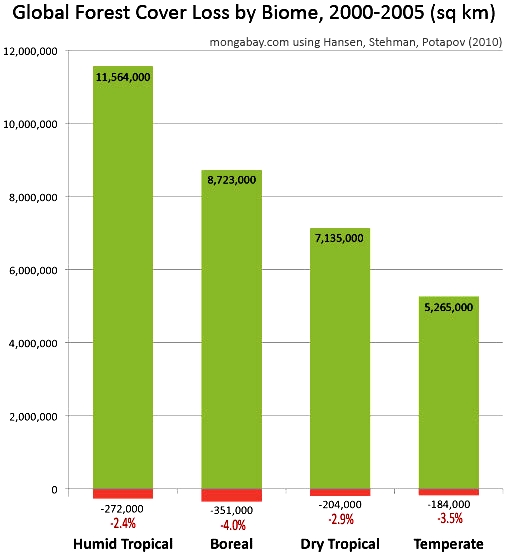
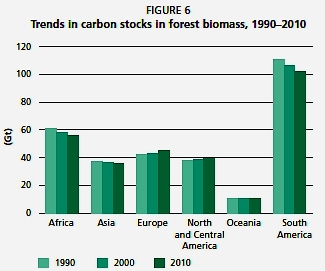
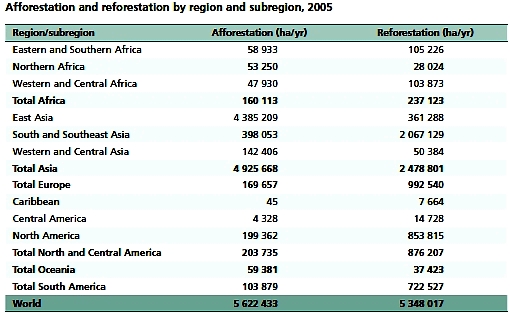
Forests store a vast amounts of carbon, but need to be properly managed.
Estimates show that the world’s forests store about 290 gigatonnes (Gt) of carbon in their biomass (above and below ground) alone. While planting, sustainable management and replanting of forests can maintain or increase carbon in forest stocks, - degradation, deforestation and poor forest management, including wildfires will lead to a decline in carbon.
Worldwide, carbon stored in forest biomass fell by about 0.5 Gt annually from 2005 to 2010, mostly because of the net deforestation trend.
Total carbon storage in trees is not Increasing and appears unlikely - any time soon.
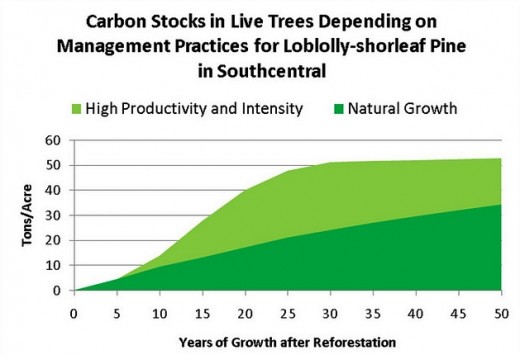
Locking Carbon Away - Avoiding Leakage through Harvesting and Wild Fires
Most of the carbon stored in trees is sequestered early when trees and small and growing. Mature trees only store small amounts of extra carbon each year, once fully grown. The storage cycle and timing is important. Trees do not continue to provide a benefit and so there is an upper threshold for the benefit. Mature forests need to be managed so the carbon is locked in permanently and not released through harvesting and wild fires - a kind of carbon graveyard approach. The carbon needs to be locked away permanently as has been suggested for so called clean-coal technology where the carbon is injected into underground graveyards. The other alternative is timber goods that last for ever and never burn or break down so that the carbon is released into the atmosphere.
The rate of conversion of atmospheric carbon into carbohydrate and locking it in the cellulose content of new wood varies depending on sunlight, genetic factors, soils, rainfall, location and the way the forest is managed. Maximum carbon sequestration by plantation forests will be favoured on improved sites, not on planting trees in poor country with degraded soils. This means trees will compete with agriculture and growing crops for biofuels.
The forests need to be managed as carbon graveyards with no net financial return. The carbon will be lost or leaked through harvesting and wildfires. The cost of managing them will be needed forever - locking up land, that could be used for other productive purposes.
Growing world populations and reduced food production rates through pollution, soil loss, soil degradation and loss of nutrients will place huge demands on the land that can be used to sequestrate the carbon via afforestation.
The bottom Line - Modeling Show Only Tiny benefits from Afforestation
A recent modeling study ( Small temperature benefits provided by realistic afforestation efforts ) has shown only trivial temperature benefits from afforestation.
One of the overlooked negative affects of forests on temperature relates to the direct effect on the forests themselves on global temperatures through the reflection of the heat of the sun. Green forests are reflect much less sunlight than croplands, marginal lands or cleared wastelands. Therefore more of the incoming solar radiation will be absorbed by afforested areas. Afforestation can warm the planet by replacing croplands, particularly at high latitudes.
The authors of the study use the latest Canadian state-of-the-art model of the Earth's climate, oceans and land surface to determine the possible climate mitigation benefits of planting trees on agricultural lands. The model assumes that the trajectory for increases in carbon dioxide and global warming will continue, and examined the effect of afforestation in this context.
The effect of afforestation was assessed assuming emissions would continue and that afforestation was performed gradually over a 50-year period. Obviously if the rates of carbon dioxide emissions could be drastically reduced, afforestation could be much more effective, but the model assumes current rates apply.
The model showed that complete (100%) replacement of croplands with forests would reduce global warming by only 0.45 degrees C, during the period 2081–2100. Partial (50%) afforestation of the area would reduce global warming by only 0.25 °C . These results show that afforestation is not an effective substitute for reduced greenhouse-gas emissions, but should be viewed as one of many things that can be done to reduce future climate change. However, planting forests can provide many societal benefits and this adds to the overall afforestation outcomes, justifying the costs.
The study also found that planting trees in the tropics is much better for climate mitigation than planting them in other areas. Additionally, if the timber and other products could be used in various ways that lock-in the carbon forever, so that it will not be re-released back to the atmosphere, then the climate benefits of tree plantings would be greatly enhanced. Forests become carbon factories and the carbon locked away by forests is not limited to the standing trees, but includes that in the exported products.
The conclusion from the study was that the focus of afforestation should be focused on the tropics, and climate change amelioration benefits should be re-assessed. Programs to fight against deforestation, which accounts for 10 to 20 percent of greenhouse-gas emissions globally would be much more effective. Controlling Deforestation is under discussion for post-2012 climate action strategies.